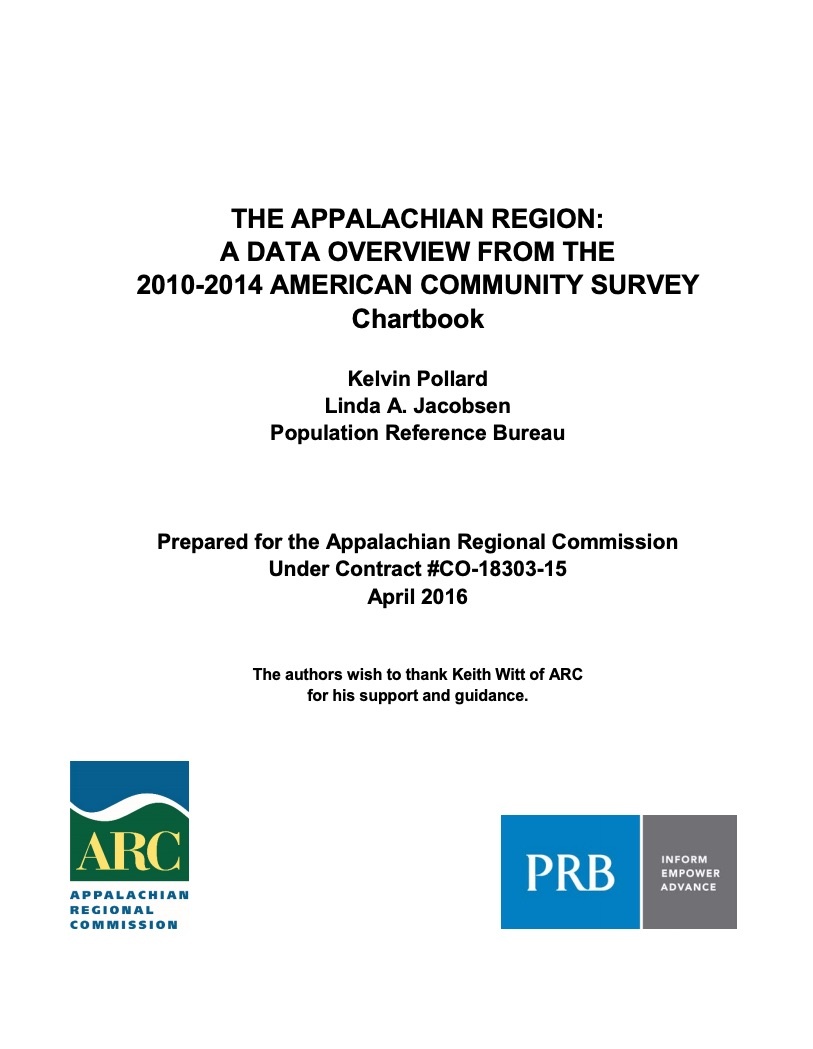
New PRB Appalachia Report Examines Jobs, Degrees, and Other Trends
Focus Area
Appalachia’s residents in their prime working years are less likely to be in the labor force or to hold college degrees than the U.S. population as a whole, but these and other demographic, health, and socioeconomic patterns vary widely within the region, according to The Appalachian Region: A Data Overview From the 2009-2013 American Community Survey, prepared by the Population Reference Bureau (PRB) for the Appalachian Regional Commission.
The region—encompassing 205,000 square miles along the spine of the Appalachian Mountains from southern New York to northern Mississippi, including portions of 12 states and all of West Virginia—has continued to see its population grow. The latest estimates show the region had 25.4 million residents in 2013 (out of 316.1 million Americans nationwide), reflecting an increase of 200,000 people since the 2010 Census.
This report—co-authored by Kelvin Pollard, PRB senior demographer, and Linda A. Jacobsen, PRB vice president of U.S. Programs—found that during the 2009-2013 period, 73 percent of Appalachia’s civilians in the prime working ages (ages 25 to 64) were in the civilian labor force, slightly below the U.S. average of 78 percent. The share was noticeably lower in some parts of the region: Just 60 percent of working-age residents in central Appalachia and 65 percent of those in the region’s rural areas were in the labor force.
The authors suggest a possible connection between educational attainment and labor force participation. For example, in most of the counties with labor force participation rates matching or exceeding that of the nation, the share of working-age adults with at least a high school diploma was also at or above the U.S. average.
At nearly 22 percent, the share of adults with a bachelor’s degree or more was seven percentage points lower in Appalachia during the 2009-2013 period than in the nation as a whole. And the rate was lower than the national average in 400 of the region’s 420 counties.
However, the authors point out that the share of adults (both in Appalachia and nationwide) with a four-year degree was four percentage points higher in 2009-2013 than it was in 2000, suggesting a continued trend toward greater educational attainment.
The researchers also examined newly available American Community Survey data on fields of study. They found that among the adults in the region with at least a bachelor’s degree, 31 percent held an undergraduate degree in science or engineering—slightly lower than the national share of 35 percent. Science and engineering are key to U.S. competitiveness in the global economy, the authors note.
The full report includes detailed tables and county-level maps.

 ">
">